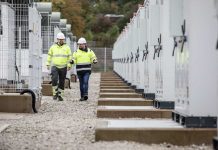
Dylan Crompton, head of corporate sales at British Gas Business, explains the myriad options available to large businesses seeking to align energy procurement with corporate social responsibility goals.
For many years, the best way to demonstrate a business’s commitment to decarbonisation was to select a green electricity tariff. With the majority of suppliers, the cost of delivering electricity sourced from renewable generation was neutralised by the exemption from Climate Change Levy, meaning little or no premium.
However, the closure of the Levy Exemption Certificates (LECs) scheme in August 2015 meant that many customers that purchased renewable electricity were suddenly exposed to CCL costs, which in some cases increased costs.
Electricity suppliers quickly adapted to this market shift and now provide supplies backed by Renewal Energy Guarantees of Origin (REGOs).
REGOs are relatively well established and as the mix of electricity generators becomes increasingly dominated by low carbon options, the price of renewable energy is falling. However, in the short term, the high demand for green power is outstripping supply which means green electricity often needs to be charged at a premium.
The more positive outcome from the shift away from LECs towards REGOs and GoOs (Guarantee of Origin) is that these certificates are recognised under Scope 2 carbon emissions reporting for ISO50001 Energy Management standards. This makes them an effective way of demonstrating a company’s environmental credentials.
For many large businesses however, the optimal way to purchase low carbon power and fuel is through a Power Purchase Agreement (PPA) or even many PPAs.
Increasingly, British Gas is working with customers that have sourced a portion of their electricity requirements from an independent renewable generator. This power is ‘sleeved-in’ to the electricity contract alongside their grid energy purchases. Under this arrangement, the customer benefits from a direct relationship with the generator and can look at longer-term pricing options.
Once one PPA is in place, customers often begin “stacking” additional agreements, procuring increasing volumes of their total electrical demand through this method. One customer has just reached a landmark in matching all of its energy demand from PPAs.
The other obvious area of focus is to reduce energy demand. Whether this is using data to eliminate waste, retrofitting energy efficient equipment or installing on site renewables, reducing imported energy is at the heart of most sustainability activity.
As we move towards a more connected future, we see the challenge as being able to integrate site energy reduction programmes with energy purchasing decisions while responding to market signals in real-time. Co-ordinating this activity requires a joined-up energy strategy between procurement, finance and operational teams to maximise energy savings and realise revenue streams available for organisations with the ability to flex their demand profile.
Find out what British Gas can do for your business at: britishgas.co.uk/business/gas-and-electricity/large-business
Related stories:
Energy procurement: Is disruption the new normal?
Incoming volatility: Act now to turn risk into reward
P272: British Gas urges firms to use half hourly data to curb rising costs
British Gas: £4bn energy efficiency opportunity for UK firms
Triad: Maximum avoidance with minimum runs
Centrica: Floodgates on battery storage to open in 2017
Click here to see if you qualify for a free subscription to the print magazine, or to renew.
Follow us at @EnergystMedia. For regular bulletins, sign up for the free newsletter.



